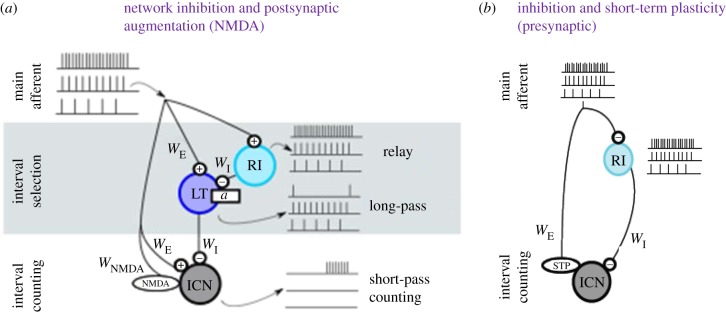Figure 8.
Schematics of neural circuits for short-pass interval selectivity and interval counting. (a) Counting on dis-inhibition circuit motif. From the main afferent, a first layer performs interval selectivity: a relay inhibitory neuron (RI) provides disynaptic inhibition with a weight (WI) to a low-threshold, long-interval selective cell (LT) with subthreshold adaptation strength a. In the second layer, the interval-counting neuron (ICN) combines afferent excitation (weighting, WE) with the interval-selective inhibition from LT. ICN receives inhibition at every pulse for long intervals but is dis-inhibited for short intervals. (b) Network diagram for a model based on short-term plasticity. Both excitation and inhibition are triggered at every pulse. The excitatory synapse is dynamic and undergoes substantial short-term facilitation. Adapted from Naud et al. [30].

